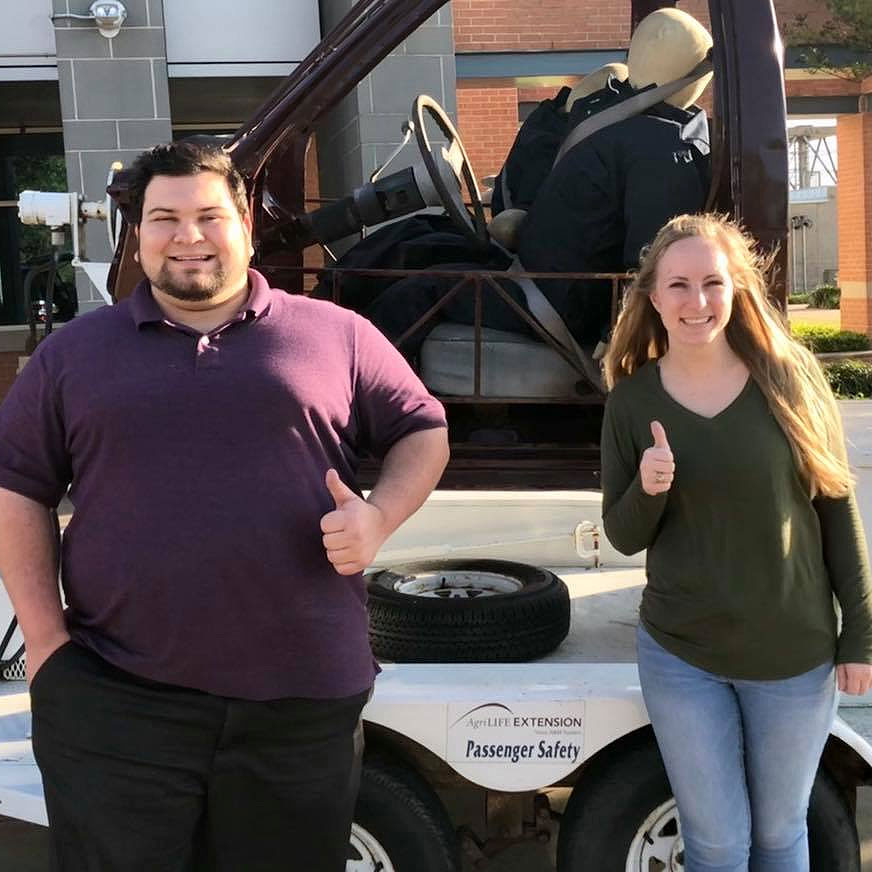Brazos Valley Injury Prevention Coalition and Statewide Initiatives
- Type
- Program

Overview
Contact
College Station, TX 77845
Monday-Friday 8:00 am – 5:00 pm
The Brazos Valley Injury Prevention Coalition (BVIPC) & Statewide Initiatives is a safe communities coalition that supports health initiatives designed to reduce traffic-related injuries and fatalities. A Safe Communities Coalition focuses on reducing injuries and deaths caused by traffic-related crashes. The Brazos Valley Injury Prevention Coalition uses the Safe Communities model in a collaborative effort with local businesses, agencies, and concerned citizens to reduce fatalities and injuries resulting from traffic-related crashes. Programs will be offered in-person and/or virtually. The Coalition’s Statewide Initiatives programs focus on providing Reality Education for Drivers (RED) classes to young drivers as well as driving safety education to mature drivers.
Reality Education for Drivers, also known as “The RED” program, is just one of the many traffic safety and injury prevention programs offered by the Brazos Valley Injury Prevention Coalition (BVIPC) & Statewide Initiatives, through Texas A&M AgriLife Extension and with the support of the Texas Department of Transportation. The RED program’s primary goal is to steer young drivers toward safer driving habits and away from possible citations while on the road – to drive sober, safely, securely, and within the speed limits. The class curriculum is designed to help participants change their attitudes about the choices they make, so in turn, they will want to change their behaviors by making better choices when traveling, either behind the wheel or as passengers.
The Mature Driver Program (MDP) is a statewide, FREE community education program aimed at giving motorists over the age of 55 the tools they need to be safe on our roads. MDP has trained coordinators who promote driver awareness and safety through education and community outreach. MDP is a collaboration between Texas A&M AgriLife Extension and TxDOT. Educational presentations are tailored to the mature audience and can cover a variety of topics including how aging can affect driving skills, medication and its impact on drivers, warning signs of an unsafe driver, and more.
BVIPC also offers programs to raise awareness on impaired driving, distracted driving, speeding, the importance of seat belt use, and pedestrian safety among other traffic safety issues. BVIPC is available for programs at schools, universities, civic groups, churches, and more.
More choices in Child Safety
- Course
Learning environments and intentional teaching are key aspects to any successful early childhood program. Home-based child care has unique settings and specific requirements to ensure the daily activities are conducive to positive learning outcomes for children in your care.
- Course
Starting a new home-based child care business involves making a number of decisions including the type of home-based child care to operate and how to incorporate best practices.
- Course
Health and safety of children in care is the #1 priority for all early childhood professionals. Home-based child care has specific requirements that must be addressed to ensure health and safety practices are properly integrated into a home-based child care.
This 2-hour course is for prospective home-based child care business owners and will introduce some of the health and safety standards, best practices, and ways to properly implement these in your home-based child care. - CourseSafe Cleaning for COVID-19: A Child Care Home’s Guide to Safe Cleaning, Sanitizing, and Disinfecting
This online course reviews safe cleaning, sanitizing, and disinfecting methods. The goal of the course is to reduce the spread of COVID-19 through best practices. This training emphasizes regulatory requirements, best practices, and steps for reducing or preventing contact with harmful chemicals.
- Course
Creating healthy habits is a critical element of quality early childhood programs. This course reviews practices that promote physical activity in young children. It is aligned with Texas Healthy Building Blocks recognition criteria and was developed with support from the Texas Department of State Health Services.
- Course
Protecting the well-being of children should be the first priority of any child care program, and one that cannot be taken lightly. Injuries cannot always be prevented; however, providing a safe environment along with careful supervision greatly decreases the likelihood of a child becoming injured while in your care.
